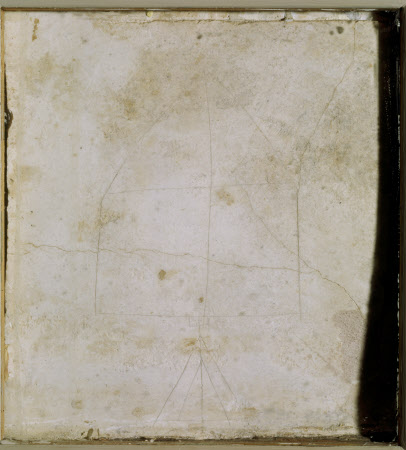Graffiti
possibly Sir Isaac Newton (1642 - 1727)
Category
Architecture / Features & Decoration
Date
circa 1625 - circa 1725
Materials
Plaster
Place of origin
Lincolnshire
Order this imageCollection
Woolsthorpe Manor, Lincolnshire
NT 427631
Caption
Are these childish etchings on the wall of Woolsthorpe Manor – some of them barely perceptible to the naked eye – the work of the young Sir Isaac Newton (1642–1727)? This modest farmhouse was his childhood home and it was here that the famous philosopher and mathematician made some of his most significant discoveries. He told several of his close friends that he conceived the law of gravity after watching an apple fall from a tree in the orchard. Newton was fascinated by how things worked and was reportedly scolded for using charcoal on the white lime-washed walls at school to sketch out his ideas. When a post mill (an early type of windmill – similar to the model, shown right) was constructed nearby, he watched closely and even made a small working model operated by a mouse miller. Various geometrical drawings and scratch marks have been discovered at Woolsthorpe, including sketches of post mills like this one. In 2017 scientists using Reflectance Transformation Imaging discovered another drawing of a postmill by the fireplace. Fittingly, this technology owes a great deal to Newton’s own research, using light to capture surface information that is invisible to the naked eye.
Summary
Graffiti markings scratched into the plaster of the wall, a drawing of a post windmill.
Makers and roles
possibly Sir Isaac Newton (1642 - 1727), creator

